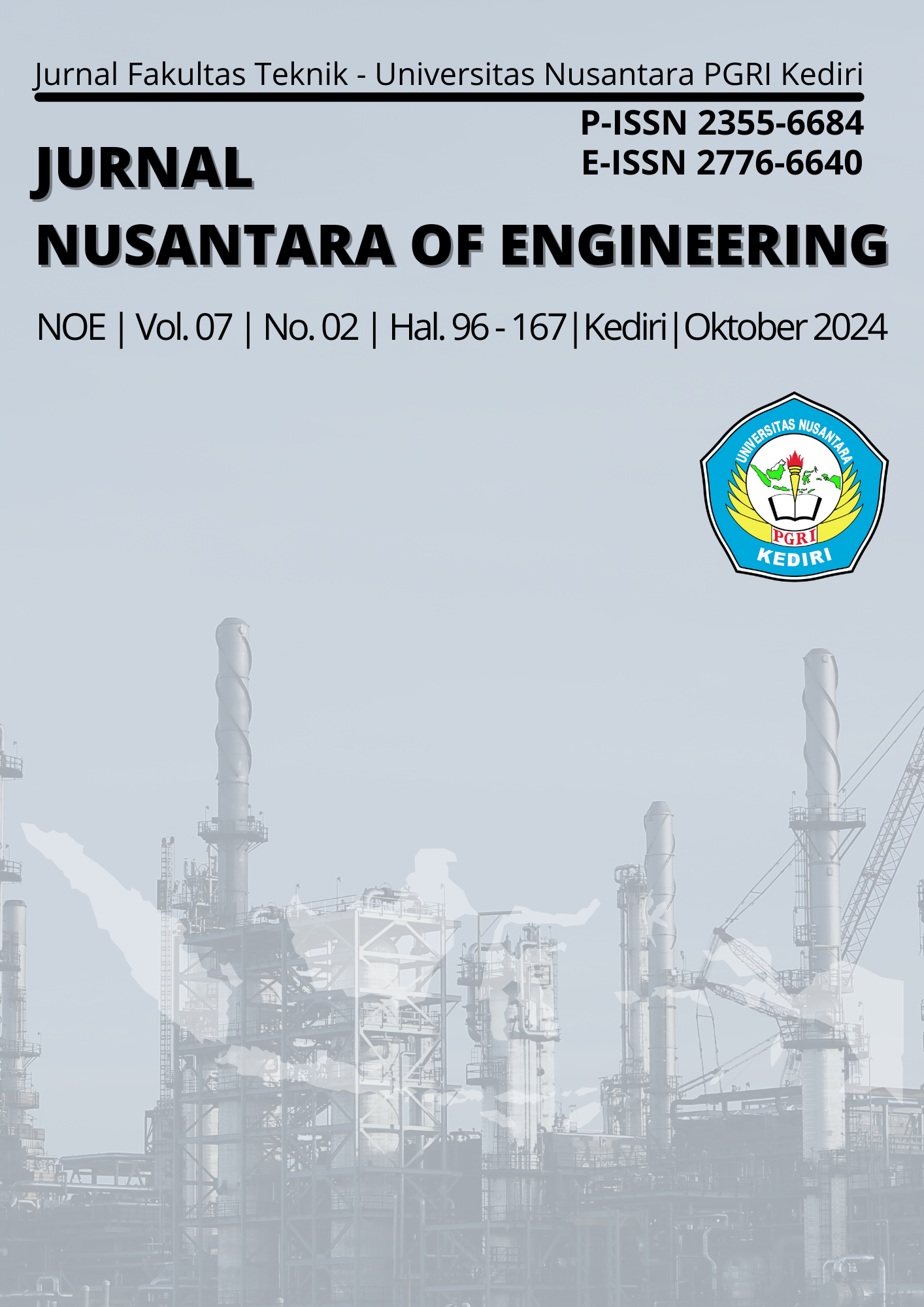KLASIFIKASI MENGGUNAKAN METODE SUPPORT VECTOR MACHINE UNTUK MENDETEKSI PENYAKIT TANAMAN BAWANG MERAH
DOI:
https://doi.org/10.29407/noe.v7i02.23169Keywords:
Klasifikasi, Penyakit Bawang Merah, Citra DigitalAbstract
Shallots are a spice that is always present in various dishes in Indonesia, and red onions also contain many diseases that attack the plant. In this research, digital image processing is used to classify shallot diseases. The aim is to make it easier to recognize, identify or analyze the object. The research stage begins with collecting data on shallot plants, then carrying out various scenarios, then in this research we classify shallot objects using the SVM algorithm. The data we use is 250 image data, which are classified as normal shallot diseases, bottom rot, caterpillars, and leaf mold. Testing is based on image size and the amount of training and testing data. The test results show that the SVM algorithm runs well and produces the highest performance, accuracy of 79%, precision of 79% and F1-score of 79%.
Downloads
References
Banu Putri, P., Ade Silvia, H., & Sarjana. (2020). Pengukuran Kinerja Sistem Kualitas Udara Dengan Teknologi WSN Menggunakan Confusion Matrix. JURNAL INFORMATIKA UPGRIS, 6(2), 66–75.
Bawarta, I. G. A. A., Yasa, I. M. W., & Arisena, G. M. K. (2022). Analisis Risiko Produksi Usahatani Bawang Merah. Benchmark, 3(1), 33–42. https://doi.org/10.46821/benchmark.v3i1.264
Elisabeth, G., Rahma Salsa Bilah, Ardini, S. N., Agustina, N., & Rismayadi, D. A. (2023). KLASIFIKASI BERITA PALSU KENAIKAN HARGA BAHAN BAKAR MINYAK (BBM) MENGGUNAKAN ALGORITMA SUPPORT VECTOR MACHINE (SVM). Naratif : Jurnal Nasional Riset, Aplikasi Dan Teknik Informatika, 5(2), 104–109. https://doi.org/10.53580/naratif.v5i2.188
Emilia Ayu Wijayanti, Rahmadanti, T., & Enri, U. (2021). Perbandingan Algoritma SVM dan SVM Berbasis Particle Swarm Optimization Pada Klasifikasi Beras Mekongga. Generation Journal, 5(2), 102–108. https://doi.org/10.29407/gj.v5i2.16075
Hasan, Moh. A., Riyanto, Y., & Riana, D. (2021). Grape leaf image disease classification using CNN-VGG16 model. Jurnal Teknologi Dan Sistem Komputer, 9(4), 218–223. https://doi.org/10.14710/jtsiskom.2021.14013
Hemanto Laia, F., Rosnelly, R., Buulolo, K., Christin Lase, M., & Naswar, A. (2023). KLASIFIKASI KEMATANGAN BUAH MANGGA MADANI BERDASARKAN BENTUK DENGAN JARINGAN SYARAF TIRUAN METODE PERCEPTRON. JURNAL DEVICE, 13(1), 14–20.
Indrawaty, R. R., Mudatsir, Yulita, E., Janide, A., Said, D., & Damayanti, R. A. (2024). Eksplorasi Perkembangan Penelitian Kinerja Lingkungan di Indonesia: Tinjauan Literatur Sistematis. Jurnal Wahana Akuntansi, 18(2), 261–276. https://doi.org/10.21009/Wahana.18.028
Laia, M. L., & Setyawan, Y. (2020). PERBANDINGAN HASIL KLASIFIKASI CURAH HUJAN MENGGUNAKAN METODE SVM DAN NBC. Jurnal Statistika Industri Dan Komputasi, 05(2), 51–61.
Mudita Chandra, millenia, & Yoannita. (2023). Klasifikasi Jenis Bunga Menggunakan Metode Svm Berdasarkan Citra Dengan Fitur Hsv. JIST, 4(2), 255–264. https://doi.org/https://doi.org/10.59141/jist.v4i02.585
Novantoro, A. R., Yuniahastuti, I. T., Susilo, D., & Bachri, A. (2023). Rancang Bangun Light Trap Otomatis untuk Menanggulangi Hama pada Perkebunan Bawang Merah di Ngawi. Jurnal Teknika, 15(2), 99–106. https://doi.org/10.30736/jt.v15i2.1133
Putri, T. B., Saidah, S., Hidayat, B., Qothrunnada, F., & Darwindra, D. (2023). Deteksi Emosi Berdasarkan Sinyal Suara Manusia Menggunakan Discrete Wavelet Transform (DWT) Dengan Klasifikasi Support Vector Machine (SVM). Jurnal Ilmu Komputer Dan Informatika, 3(1), 1–10. https://doi.org/10.54082/jiki.45
Zalvadila, A., Purnawansyah, Syafie, L., & Darwis, H. (2023). Klasifikasi Penyakit Tanaman Bawang Merah Menggunakan Metode SVM dan CNN. Jurnal Informatika: Jurnal Pengembangan IT, 8(3), 255–260. https://doi.org/10.30591/jpit.v8i3.5341
Downloads
Published
Issue
Section
License
Authors who publish with this journal agree to the following terms:
- Copyright on any article is retained by the author(s).
- The author grants the journal, right of first publication with the work simultaneously licensed under a Creative Commons Attribution License that allows others to share the work with an acknowledgment of the work’s authorship and initial publication in this journal.
- Authors are able to enter into separate, additional contractual arrangements for the non-exclusive distribution of the journal’s published version of the work (e.g., post it to an institutional repository or publish it in a book), with an acknowledgment of its initial publication in this journal.
- Authors are permitted and encouraged to post their work online (e.g., in institutional repositories or on their website) prior to and during the submission process, as it can lead to productive exchanges, as well as earlier and greater citation of published work.
- The article and any associated published material is distributed under the Creative Commons Attribution-ShareAlike 4.0 International License








